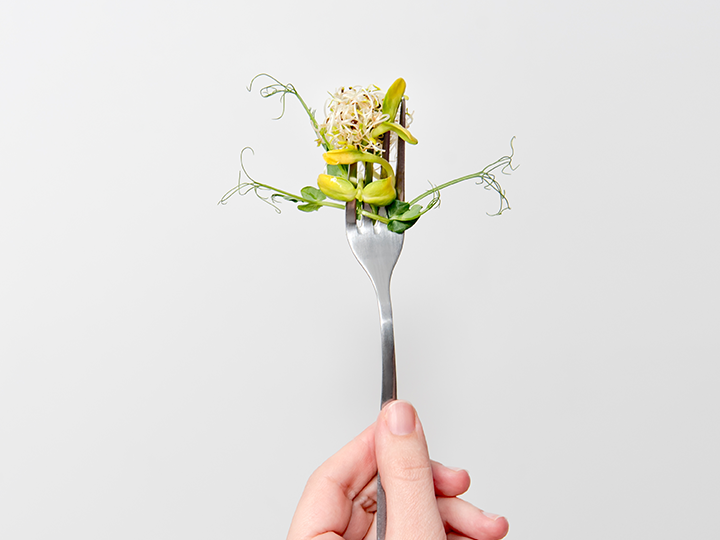
What are the benefits of sprouting? How do we make it, in which dishes do we use it?
You remember the lentil and chickpea project we made with cotton in a yogurt bowl in primary school.
In a corner of the classroom, we would grow living plants in tiny containers. Sprouting (or sprouting) has been on the agenda in recent years, thanks to the growing interest in healthy eating, vegan and vegetarian diets. In many countries, we come across examples such as sprouted almond oil, sprouted chickpea burger or sprouted quinoa salad, not only at home, but also in markets and restaurant menus.
So why bother with sprouting? What are the benefits? How do we make it, in which dishes do we use it?
Sprouting gives legumes, grains and seeds a completely different texture and freshness. It increases the nutritional values exponentially. Moreover, we can say that it is an extremely simple and fun kitchen activity.
The nutritional value of seeds, legumes and grains is already quite high. However, digesting them can be difficult. Just as soaking the chickpeas the night before makes cooking easier, the sprouting process also facilitates digestion. Cereals, legumes, edible seeds contain different amounts of phytic acid.
This is the way seeds store phosphorus. It is not a terribly harmful substance for us, but it impairs the body's absorption of iron, zinc, calcium, and blocks digestive enzymes. Sprouting deactivates the phytic acid, thus ensuring digestion and mineral absorption.
Thanks to sprouting, you can increase the vitamins, minerals and enzymes in the seeds several times. Those tiny sprouts are especially vitamin A, B, C, D and E bombs. For this reason, experts recommend that we eat sprouted seeds to prevent diseases, especially in winter.
You have to wait a few days to get your sprouts, but believe me, this is an extremely simple and affordable activity. All you need is material to sprout, water and a large container or jar. And of course a little patience.
Although the first thing that comes to mind is lentils and beans, in fact all shelled legumes and grains, as well as seeds such as sunflower seeds and pumpkin seeds can be sprouted.
The most important rule is that the material used has not undergone any chemical treatment. Canned legumes are also not suitable for sprouting because they are cooked. In addition, if we look at the health side of the business, it is necessary to take care that all the materials used are sterile, just like in pickles or jams.
1. After thoroughly washing the seeds you will sprout, put them in a large container or a jar with a few holes in the lid. If using jars, be careful not to use too many seeds. Remember, they will swell as they stand in water, and as they sprout, they will come to a point where they will want to escape from the jar.
2. Cover the seeds you want to sprout with a few inches of water and add a little salt. Leave for 12-24 hours in a place out of direct sunlight. Ideally, leave it overnight.
3. Drain the water completely and put it in a large bowl or jar and cover it with a cheesecloth.
4. For several days, rinse twice a day, strain and cover with cheesecloth again. Make sure the seeds are constantly moist. For this, wet the cheesecloth from time to time if necessary. At the same time, make sure that the temperature of the room you keep is not low. Otherwise, the germination time may be delayed.
5. Chickpeas, lentils, beans, all sprout at different times, so check every once in a while. When the sprouts are 0.5-1 cm tall (this can usually take 3-5 days), rinse and drain well. Put it in a jar and put it in the fridge.
7- Before eating your sprouted seeds, wash them with plenty of water and drain them. Consume within 2-3 days. Always keep it in the refrigerator.
You can consume the sprouted seeds raw or eat them after cooking for a short time. Aside from their health benefits, they are quite delicious. They add freshness and texture to salads, sandwiches, and appetizers like hummus. You can also add it to pot dishes and soups.